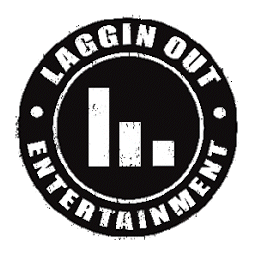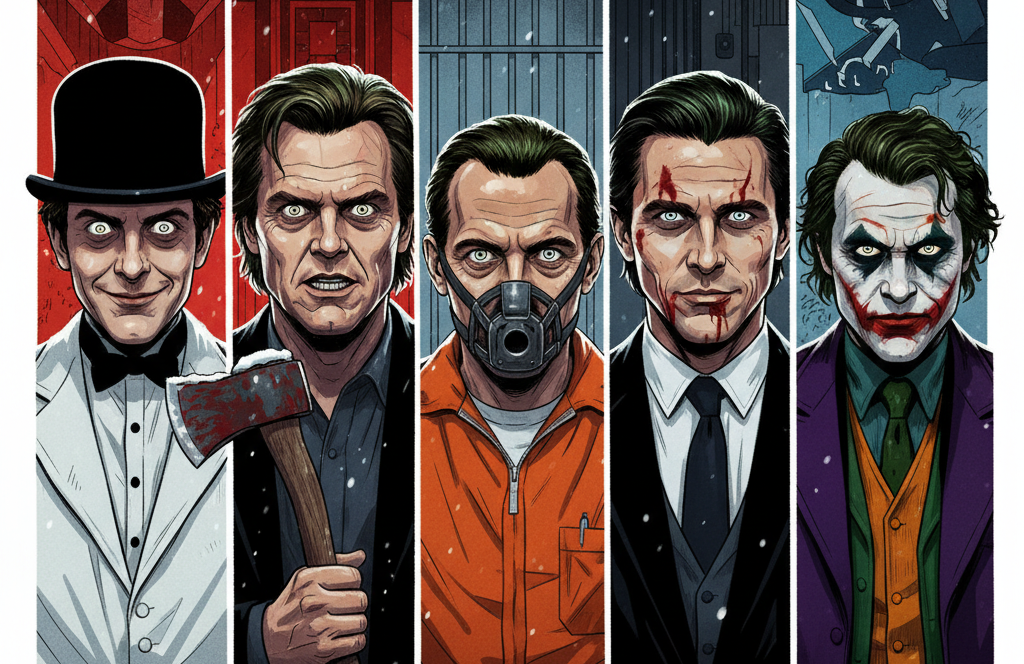Your cart is currently empty!
The look that doesn’t blink, doesn’t beg, and doesn’t even care if you recognize it, because it already recognized you first.
Every October resurrects monsters in masks. Friday the 13th with Jason behind his goalie, Texas Chainsaw Massacre with Leatherface behind his gruesome human skin, Halloween with Michael Myers William Shatner/Captain Kirk mask (another article for another day). and Scream with Ghostface. But Stanley Kubrick never needed one. He gave us The Stare; chin down, eyes up. The moment acute awareness replaces empathy and the camera deadpans on that face. If The Son of the Devil was the bloodline, The Devil’s Gaze is the anatomy behind it.
The Birth of the Look
Believe it or not, some people might think the Kubrick Stare started with The Shining. But, no, it all started with Malcolm McDowell’s Alex in A Clockwork Orange. Head lowered, lashes painted on, eyes burning right through the frame. That was the grin of a man who found clarity through his cruelty. Kubrick’s camera met the gaze and remained still. Nine years later, The Shining turned that composure on it’s head and went nuclear. Jack Nicholson’s face filled the screen, perfectly centered, symmetrical, and possessed. The geometry did the violence.
That shot became the Rosetta Stone of modern horror.
Silence Learns to Speak
Ten years later, Jonathan Demme borrows Kubrick’s trick and flips it. In The Silence of the Lambs, Anthony Hopkins’ Hannibal Lecter doesn’t glare up from madness; he looks straight through civility. When he leans towards Clarice, the lens locks on him dead-center and the eyes glint upward just enough to show the whites. It’s seduction in the form of The Kubrick Stare. His intelligence is so precise it becomes predatory. Kubrick’s monsters broke, but Lecter never once does. He perfects the stare into knowledge without restraint.
The Mirror Cracks
By the year 2000, the look went yuppie corporate. American Psycho turned Kubrick’s symmetry into satirical horror. Christian Bale’s Patrick Bateman studies his reflection, his chin tucked, eyes blank, the perfect yuppie replicant. Bateman thrives on awareness while Kubrick’s characters collapse under it. The gaze is no longer the symptom; it’s the aesthetic. The monster is now moisturizing.
Chaos Learns Precision
In comes The Dark Knight. Heath Ledger’s Joker; smudged pain, downturned head, gaze upward. He isn’t just mimicking Nicholson’s Shining face; he’s inheriting it. The same angles, but now the madness is joyous. The Stare has now become performance art. Chaos is made self-aware and perfectly lit. When he says, “I’m not a monster, I’m just ahead of the curve”, he’s quoting Kubrick without even knowing it. Ironically, Jack Nicholson warned Heath Ledger about the mental toll Joker would take on him as the character is psychologically draining. Unfortunately, that warning didn’t save him.
The Devil’s Reflection
Half a century later, The Kubrick Stare isn’t just a director’s trademark. Kubrick’s lens created it, Demme refined it, Bale corporatized it, and Ledger turned it into theater. Now, Jack’s son Ray is taking it into the future. Every Halloween we see versions of it; costumes, memes, selfies. The head dips, the eyes rises, and the humanity filter switches off.
That’s the real fear. Not monsters. Not masks. Pure recognition.


Leave a Reply